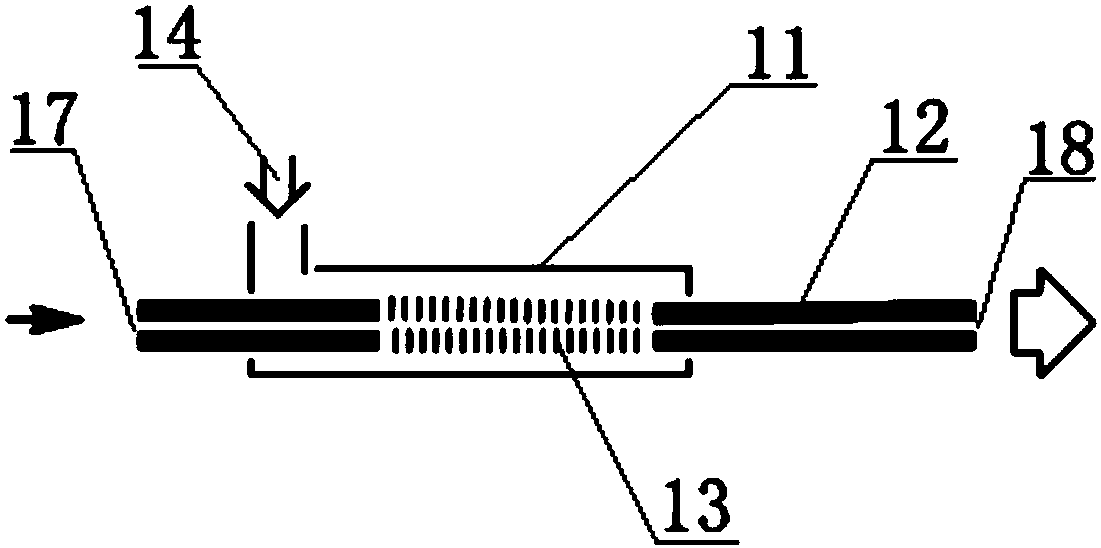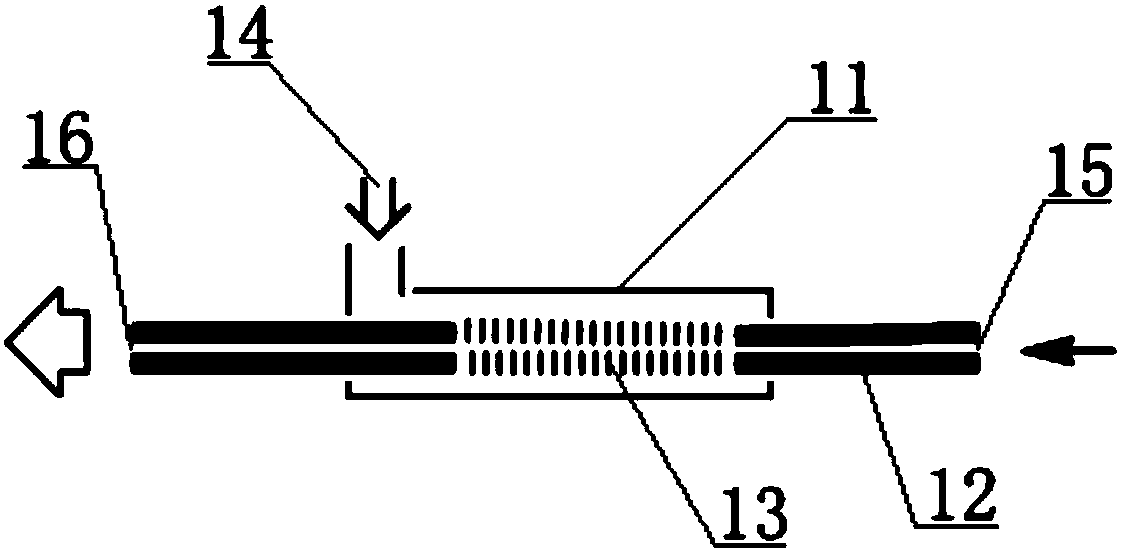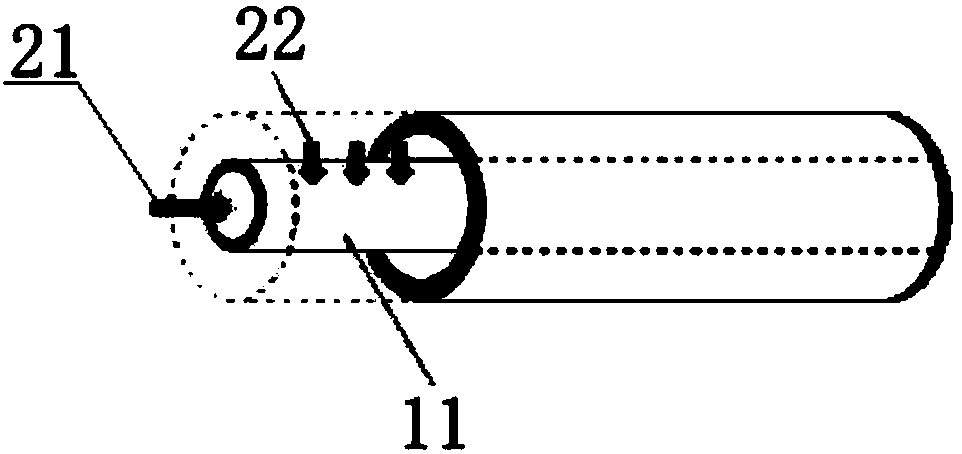Microporous eddy double-tube reactor and application thereof
A casing reactor and microporous technology, applied in chemical/physical/physical chemical reactors, chemical instruments and methods, chemical/physical/physical chemical processes, etc., can solve the problem of limited temperature and pressure resistance, amplification limitations , Instantaneous hot spots and other problems, to achieve the effect of alleviating the intense heat exchange process, strong micro-mixing, and long residence time
- Summary
- Abstract
- Description
- Claims
- Application Information
AI Technical Summary
Problems solved by technology
Method used
Image
Examples
Embodiment 1
[0055] Such as Figure 4 As shown, it is a discontinuous multi-group microhole array, which is composed of multiple groups of arcs parallel to the cross-section on the tube wall. These arcs are sequentially advanced along the axial direction and present a clockwise or counterclockwise spiral in the circumferential direction of the tube wall; It can also be composed of multiple sets of straight line segments parallel to the axial direction, and these straight line segments are progressive in the radial direction and axial direction, and present a clockwise or counterclockwise spiral in the circumferential direction of the pipe wall; It is composed of multiple groups of arcs that are not parallel to the circumferential direction, and these arcs are progressively progressive along the axial direction and present a clockwise or counterclockwise spiral in the circumferential direction of the pipe wall, or clockwise and counterclockwise spirals in different orders Combination; it ca...
Embodiment 2
[0061] Such as Figure 5 As shown, it is a continuous group of microhole arrays, which are composed of multiple sets of arcs parallel to the cross section on the tube wall and connected by multiple sets of straight line segments parallel to the axial direction. The combination of these arc lines and straight line segments extends along the axial direction. Progressive in turn presents a clockwise or counterclockwise spiral in the circumferential direction of the pipe wall; it can also be composed of multiple sets of straight line segments parallel to the axial direction and multiple sets of arc connections on the tube wall that are not parallel to the cross section. These straight line segments Combining with the arc along the axial direction, it presents a clockwise or counterclockwise spiral in the circumferential direction of the pipe wall; it can also be composed of multiple sets of arcs parallel to the cross section on the tube wall and multiple sets of arcs that are not p...
Embodiment 3
[0070] Such as Figure 6 As shown, it is a continuous group of microhole arrays, which are composed of multiple sets of arcs that are neither parallel to the cross-section nor parallel to the axial direction. Distribution, the combination of these arcs advances along the axial direction and presents a clockwise or counterclockwise spiral in the circumferential direction of the pipe wall; it can also be a combination of clockwise and counterclockwise spirals in different sequences and length ratios.
[0071] Figure 6 The following microhole arrays are progressive along the axial direction and present a counterclockwise or clockwise spiral in the circumferential direction of the tube wall. The dotted line shows the arc or straight line on the back of the inner tube wall:
[0072] Figure 6 (j) Similar to the counterclockwise helical continuous multi-group microhole arrays with coils wound in the circumferential direction of the tube wall and distributed parallel to each other...
PUM
 Login to View More
Login to View More Abstract
Description
Claims
Application Information
 Login to View More
Login to View More - R&D
- Intellectual Property
- Life Sciences
- Materials
- Tech Scout
- Unparalleled Data Quality
- Higher Quality Content
- 60% Fewer Hallucinations
Browse by: Latest US Patents, China's latest patents, Technical Efficacy Thesaurus, Application Domain, Technology Topic, Popular Technical Reports.
© 2025 PatSnap. All rights reserved.Legal|Privacy policy|Modern Slavery Act Transparency Statement|Sitemap|About US| Contact US: help@patsnap.com



